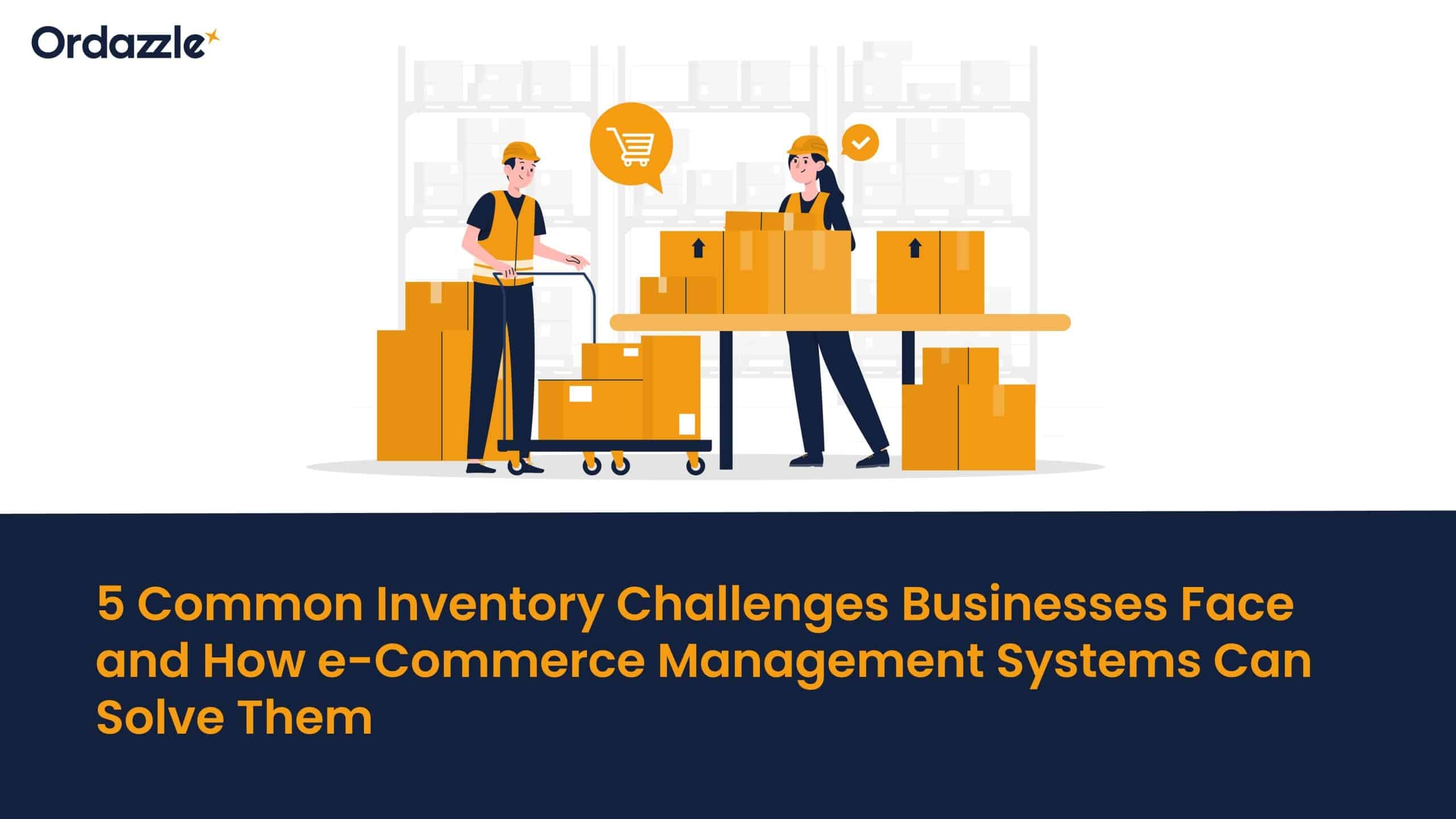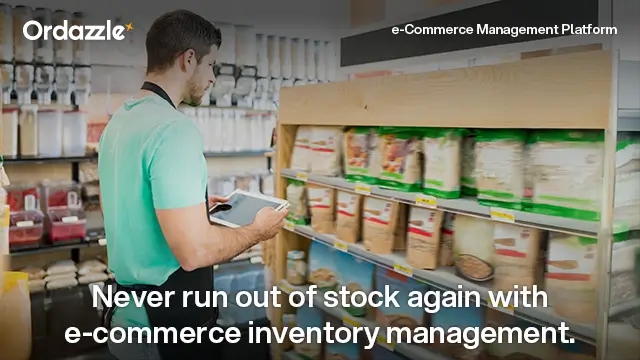5 Common inventory challenges businesses face and how e-Commerce management systems can solve them

By now, every e-Commerce company knows that efficient inventory management can be the difference between success and failure.
However, it’s not easy to build all accounting, stock, and monitoring processes into a well-coordinated and clear mechanism.
There are a lot of moving parts in inventory management, with many challenges and variables associated with each part.
In this blog post, we will explore the main inventory management challenges faced by warehouse managers in their daily routines, and understand how e-Commerce management systems can help allay these issues.
5 inventory management challenges businesses face

- Manually Managing Multiple Warehouses and Channels
During the initial stages of your business, it’s common to have only your website and a single warehouse to store your stock. Pen and paper spreadsheets might suffice to keep tabs on your inventory, the movement of products, and everything else.
But as your products pick up momentum, they will also grow in demand. As time passes, demand will also arise from different geographies. As a result, you would require more warehouses to store your inventory and more channels to sell through. Spreadsheets, consequently, won’t be able to keep up with the increasing complexity.
In fact, any manual method to keep track of inventory will become extremely tedious, cause confusion, and lack clarity. The outcome? Supply chains go haywire, sales drop, and so does customer satisfaction.
That’s why it’s important to put your inventory tracking on autopilot as you scale. e-Commerce management systems like Ordazzle are built to consolidate all your inventory and warehouse information into one single source of truth, allowing you to stay on top of your stock, prevent understocking and overstocking, and ensure supply and demand are always balanced.
- Identifying and Tracking Obsolete Products
It’s possible that while some of your products sell like wildfire, some are forgotten and left abandoned on corner shelves at warehouses. This might be due to them being overshadowed by your other products and a general lack of demand.
But their need might still arise. And many times, in such cases, inventory managers may order new products, leaving the old stock unused and resulting in a loss.
With sophisticated stock control systems and e-Commerce inventory management software, like Ordazzle, you can effectively hunt dead inventory and use it when required. Stock rotation and expiry management methods like FIFO and FEFO guarantee that all old inventory is used before you use newer stock. This prevents the accumulation of stockpiles.
- Stocktake Discrepancies
When goods and shipments are incorrectly placed or packed in a warehouse, that leads to a stocktake discrepancy. Due to this, goods may be mixed with other items, scattered in the wrong places, or incorrectly labeled.
The result? Errors in product accounting, problems in order shipment, and customer dissatisfaction.
To prevent this problem, you need a proper, effective, and preferably automated system of goods accounting and control. In this department, Ordazzle allows you to track goods by barcode, optimise the accounting and selection processes, and accurately receive timely information about goods availability.
All in all, having an e-Commerce management system provides an addressable storage system for your goods in your warehouse. This allows your employees to find and select goods they need easily, reducing search time and minimising errors.
Also Read: 5 Tips For Accurate Inventory Control Management For e-Commerce Businesses
- Lack of real-time visibility
As mentioned earlier, spreadsheets quickly become impractical as you scale. The reason is as your product grows more popular, your brand recognition also skyrockets. Now, there’s a reputation at stake, and you can maintain and improve it only by providing the best service and customer satisfaction.
That means on-time deliveries, reliable returns, and delivery tracking. For that, you need to know where all your orders are, as they are moving.
Not doing so opens you up to shipping details, extra costs, and a mismatch in inventory balance. Ordazzle’s e-Commerce order management supplies you with real-time tracking of all your inventory, making it easy for your teams to reach any delays or issues instantly so that there are minimal hiccups in the supply chain processes.
- Slow order picking
A lag in your order-picking processes essentially means delayed deliveries, missed business opportunities, and, ultimately, dissatisfied customers. You need to optimise your order-picking operations to address these issues.
Ordazzle’s e-Commerce order management capabilities make it possible to implement batch-picking and zone-picking strategies, thereby expediting order picking. Leveraging Ordazzle’s modern, automated processes further simplifies all other processes associated with order management.
The right inventory management starts with Ordazzle’s e-Commerce management system
By addressing the key challenges associated with inventory management and accounting through automated systems, e-Commerce order management, and improved inventory and visibility, businesses can overcome the obstacles and achieve reproducible efficiency in inventory management.
Improve profitability and customer satisfaction with a streamlined inventory mechanism, made possible by Ordazzle’s next-gen capabilities, which are designed with efficiency, interoperability, and convenience in mind.
Get yourself the competitive edge today. Connect with us to take charge of your inventory management with our cutting-edge e-Commerce management systems.


